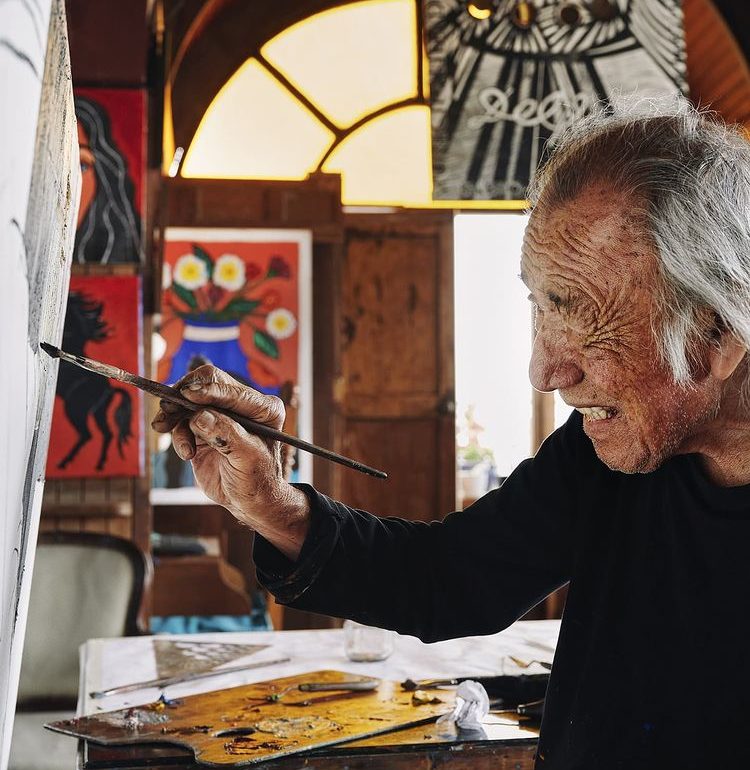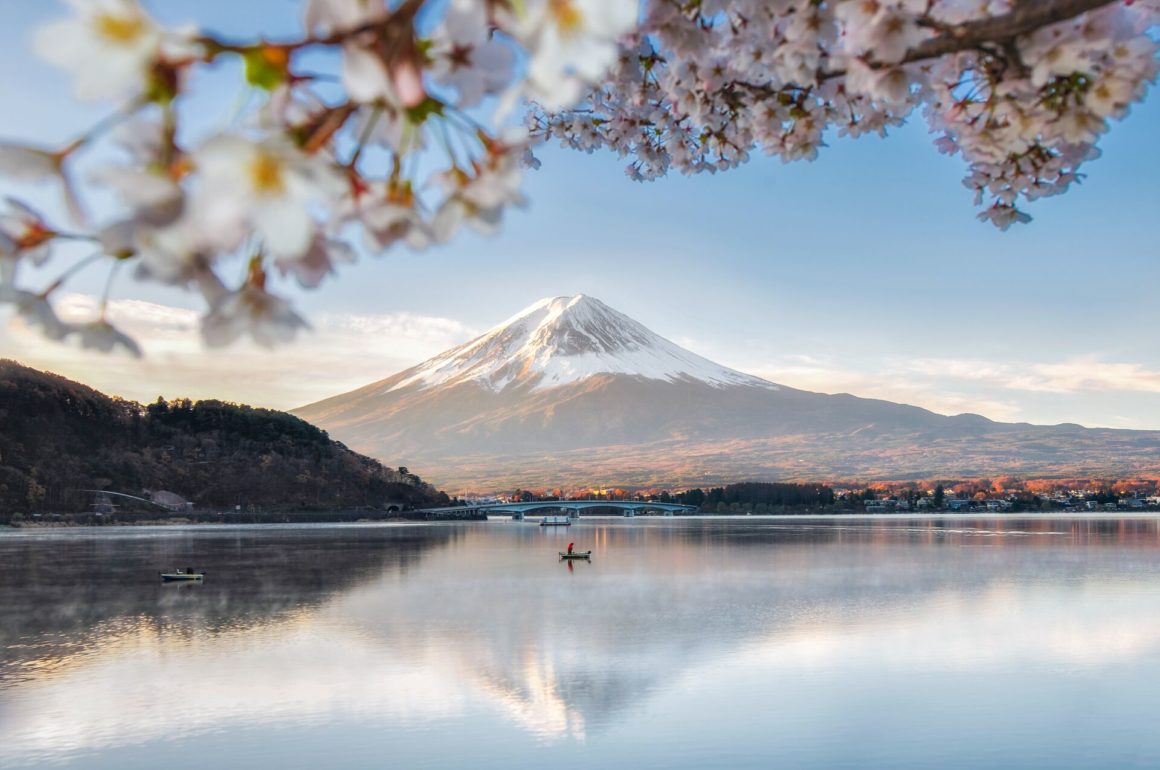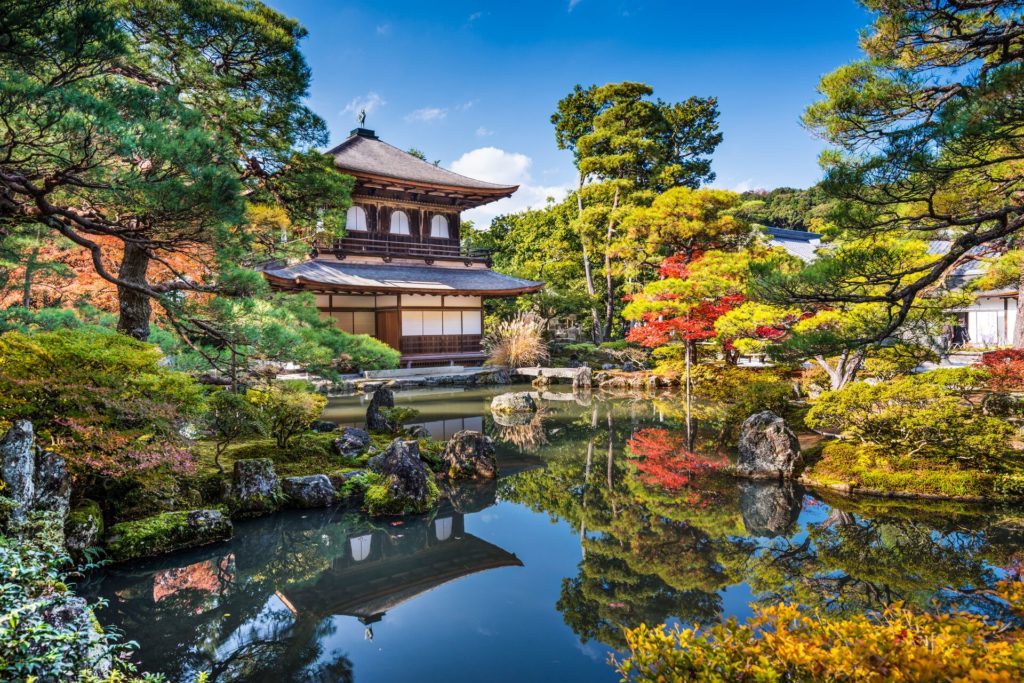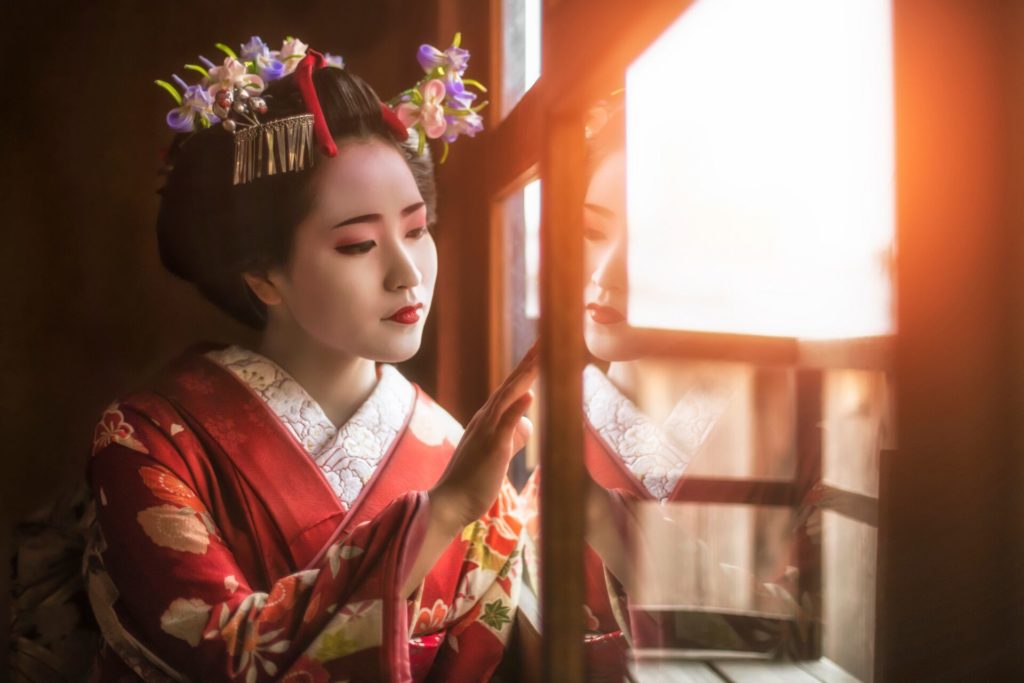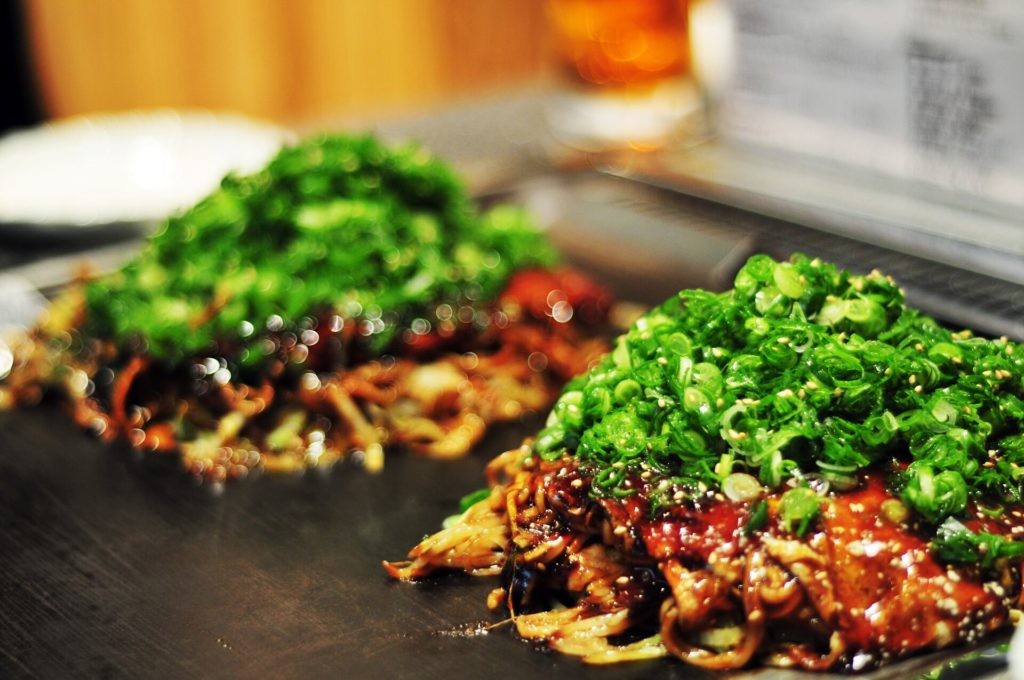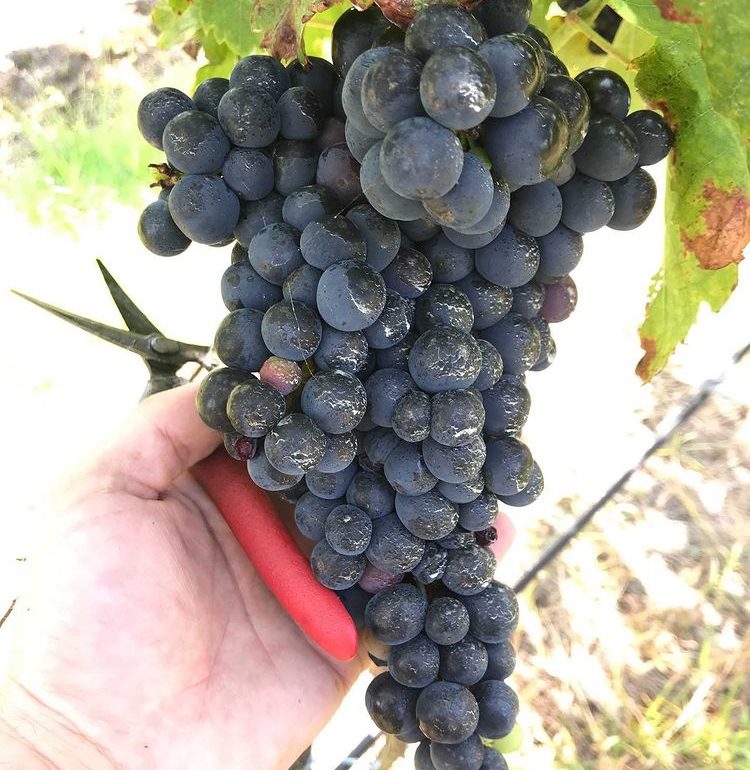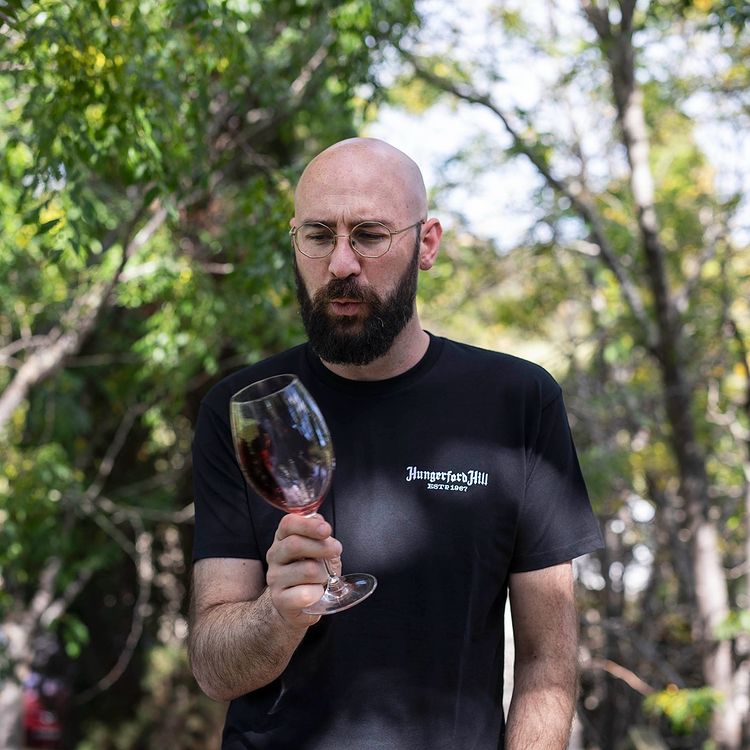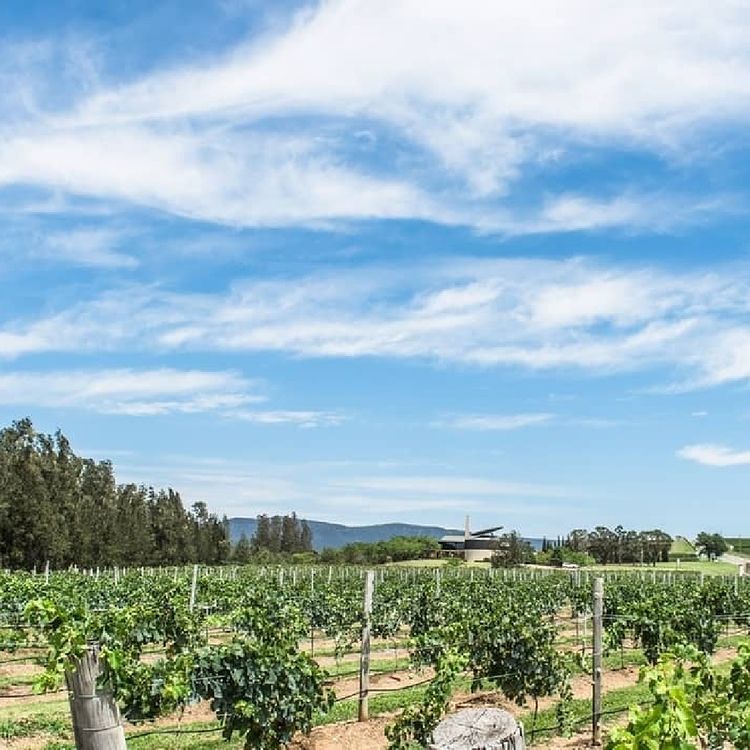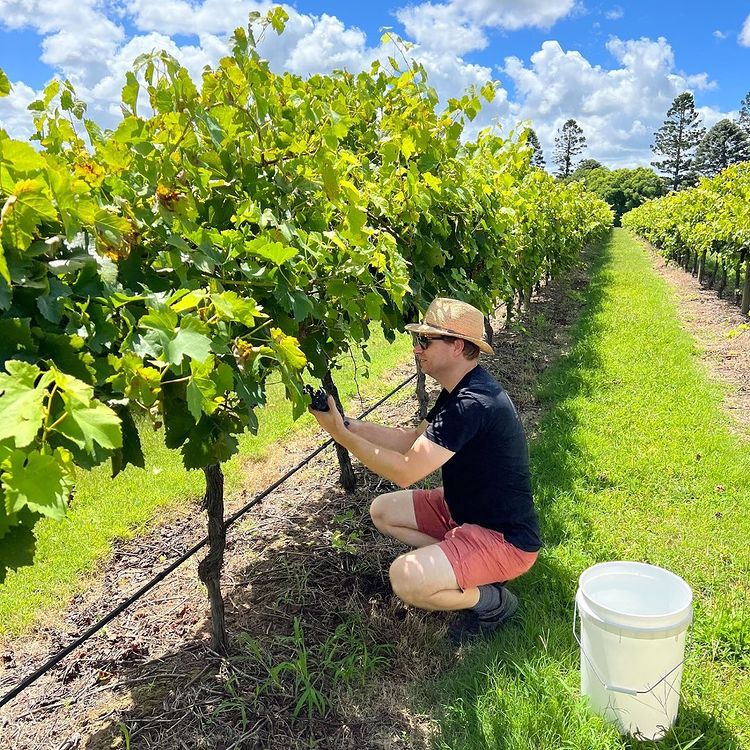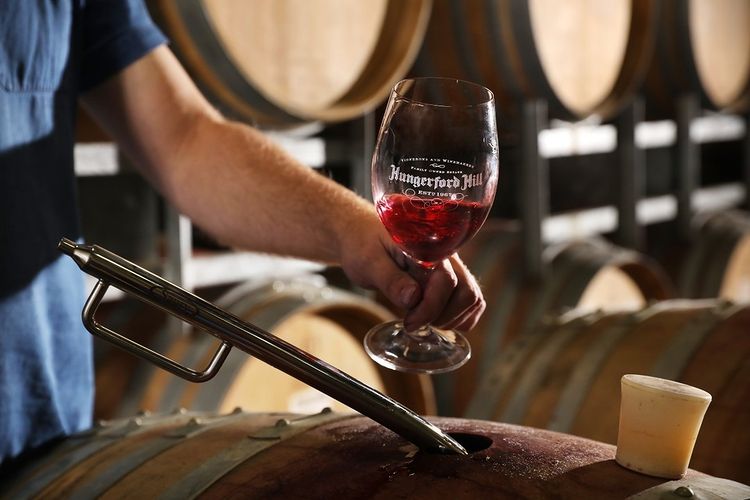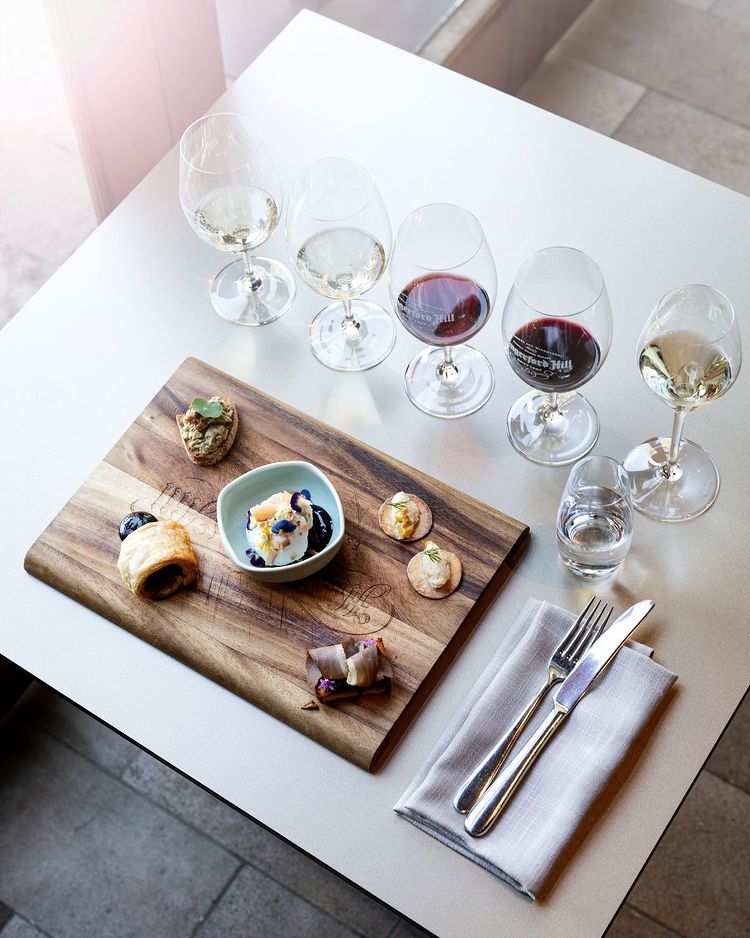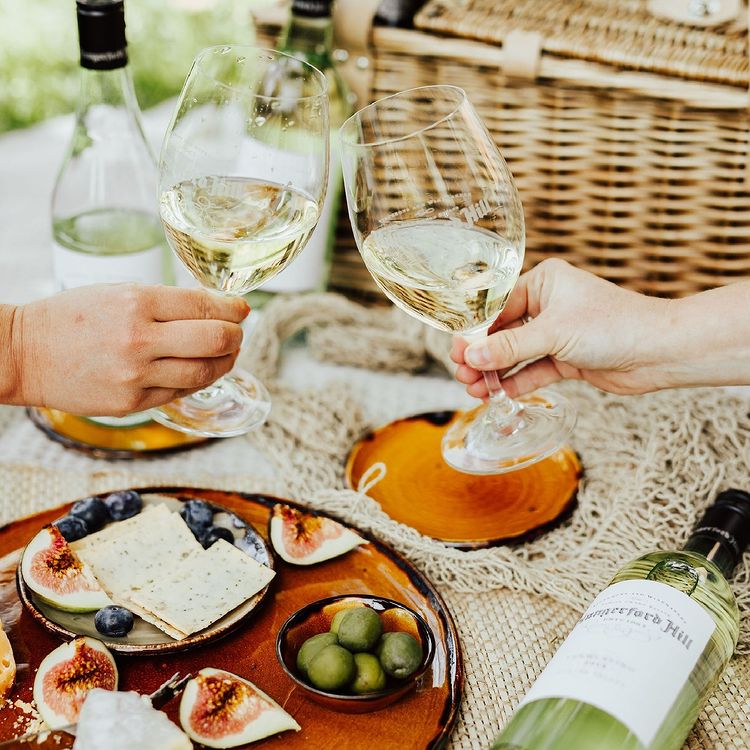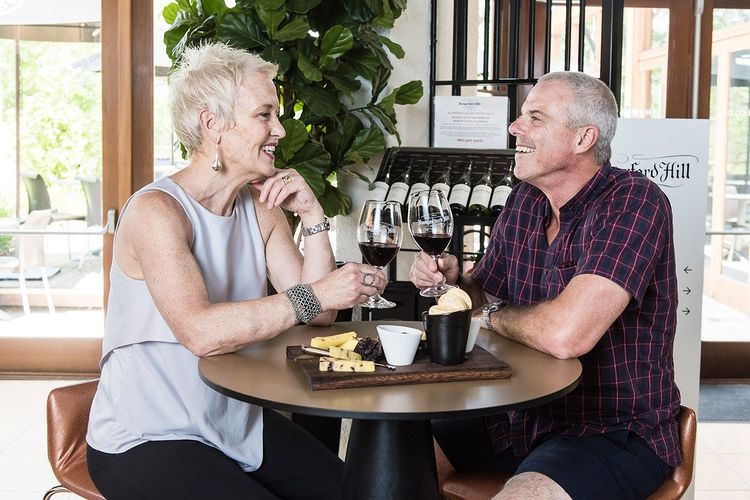Esteemed Peruvian artist Victor Delfin has been inspired by the unique heritage and people of his native Peru. From large scale sculptures to graphic, vibrant paintings, Delfin captures the events and emotions of Peruvians. We are fortunate that he opens his home and workshop to Luxury Gold guests as one of our VIP Experiences on our Grand South America and Treasures of the Incas tours.

@victordelfin92
Victor Delfin’s house
You’ll find Delfin’s Tudor-style home perched on a cliff above the Pacific Ocean. Here, giant waves add a dramatic background to the setting. While Delfin maintains residency, his home is also a contemporary art museum, artist studio and bed and breakfast called Second Home Peru.
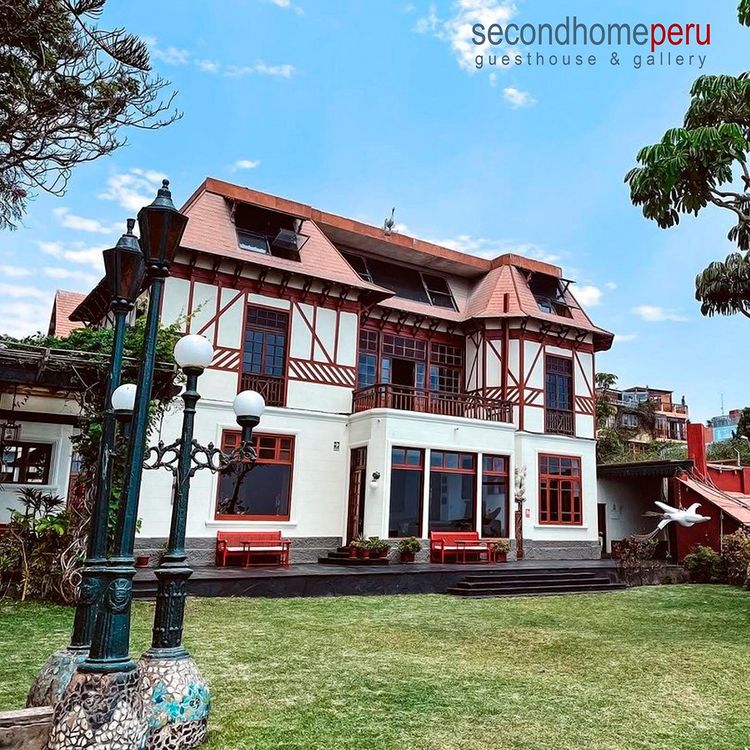
@victordelfin92
Inside Delfin’s home
Approaching the home, gardens dotted with sculptures of angels, a bull, a horse tossing its mane and a lion creating a sense of wild movement and energy will impress you. Inside, Delfin’s home welcomes with warm wood trim, colorful stained glass and curio cabinets filled with sculptures. The second floor was once family rooms and galleries. Up one more level, a hidden spiral staircase leads to a tower studio overlooking the ocean where Delfin used to work.
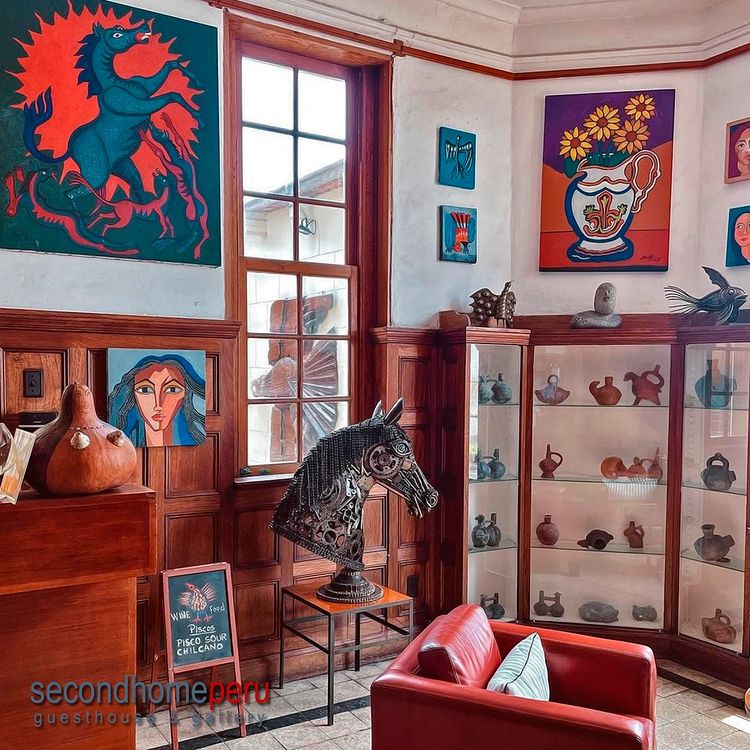
@victordelfin92
Delfin’s presence
Delfin’s touch is everywhere. For example, you can view the wrought-iron wood burning stove, hand-shaped light fixtures, leather chairs and even chess pieces he designed as well as the numerus boldly colored paintings that adorn the walls.
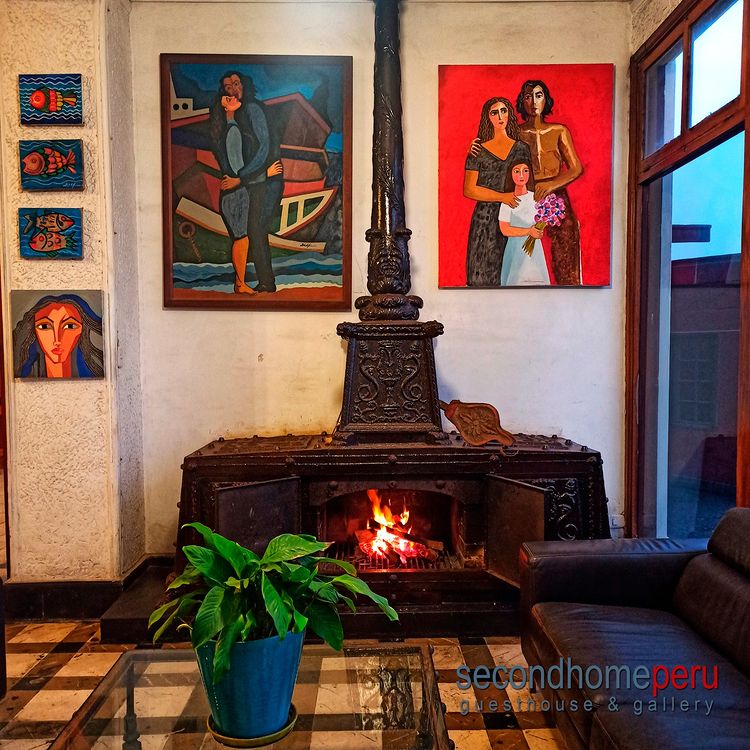
@victordelfin92
Over the years Delfin has expanded his property to include a new studio, cave gallery and a large swimming pool with a fountain shaped like a puma head. Before Delfin’s daughter converted the family rooms, gallery space, dark room and her father’s former studio into guest rooms in 2004, it was once a meeting place for Lima’s artists and activists.
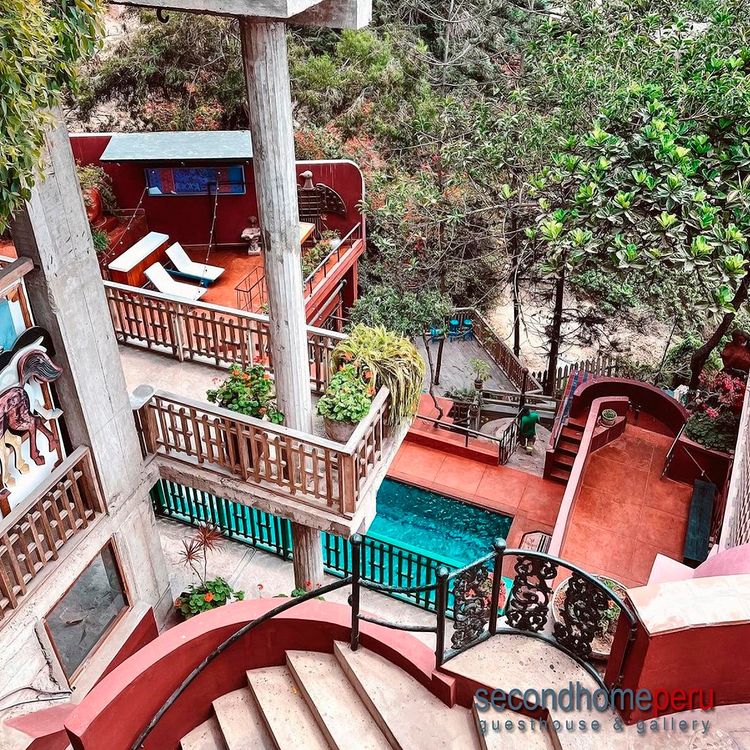
@victordelfin92
Community and legacy
Victor Delfin’s house is in the Barranco neighborhood known for its cafes and murals. The neighborhood is also a hub of creativity among the local writers, poets, musicians, photographers and other artists. In addition, politically, Delfin’s house was also a gathering space for dissidents from “La Resistencia Democrática,” a group who opposed then-president Alberto Fujimori in the late 1990s. Delfin played a role in organizing the marches and protests. As a result, his involvement in political causes is just as strong a contribution to Peru as his art.
Victor Delfin’s art
However, Victor Delfin’s art is his legacy. The pre-Inca Paracas culture inspired Delfin. Thus, his art has a boldly colorful yet mysterious and magical quality reminiscent of this disappeared nation. He works with a range of materials including wood, metal, canvas, polychrome acrylics and aluminum. But, many know Delfin for his large metal sculptures of birds, horses and other animals. For example, Delfin’s famed “El Beso” (The Kiss) sculpture sits in Lima’s Parque del Amor (Love Park). It has become a popular spot for couples to pose with the sculpture on romantic occasions.
We connected with Delfin to learn more about his artwork and influences in his own words.
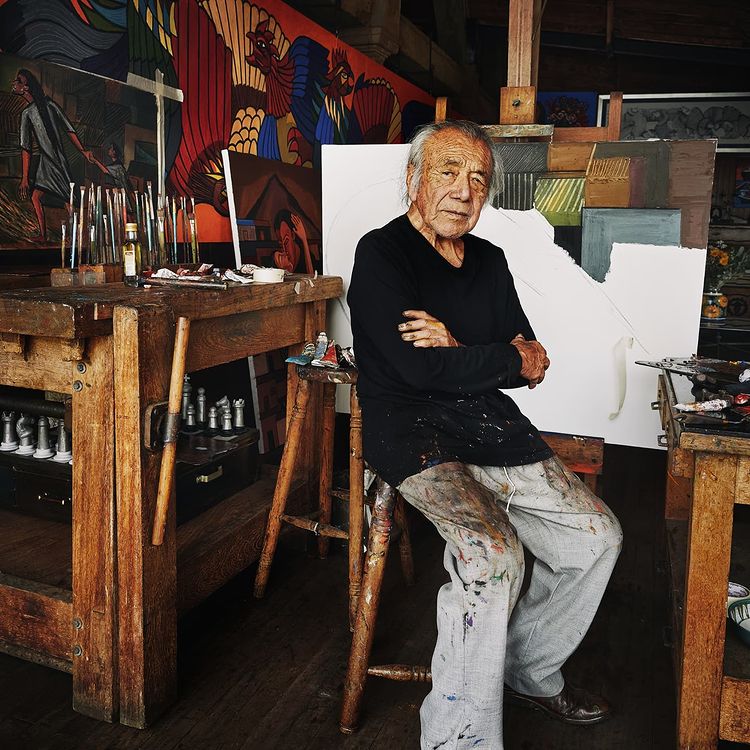
@victordelfin92
In Delfin’s words
Peru has certainly influenced my artwork. With roots as old as the Greek, Egyptian and African cultures, Peru has an exciting amount of history to discover and display.
From its unique, pre-Columbian architecture to its music and folk crafts, it is full of surprises. Its natural beauty and heritage is inspirational, with the splendor of the Amazon, the powerful snow-capped mountains and, of course, the welcoming nature of its people.
All my work is somehow based on my country, and I like to show this to Luxury Gold guests when they visit my workshop. My passion for creativity is kindled by my love for home. There’s little surprise that the place I feel most comfortable is right here (in a studio I designed, “my way,” to quote Sinatra).
When Luxury Gold guests visit, they ask me about my favorite piece of artwork, and are surprised when I explain there is no favorite. As artists, everything we make, we make with a lot of enthusiasm and passion. We give the best of ourselves in the art that we create.
Delfin’s passion
For artists, our creations are like our children, and we care for them with the same passion, whether one makes a painting, a sculpture or a jewel.
I hope to pass along this passion for creativity, which nature gave me as a child and which was guided by the immense love of my parents, friends and mentors, and inspires me to take care of others. I feel obligated to be an activist for human rights, for the struggles of citizens to improve their quality of life.
It’s my way of giving back to the people. After all, my inspiration is in the streets, in the towns, in the customs of the people and their ways of expressing themselves.
What will you be inspired by in Peru?
Explore dining in Peru and our tours: Treasures of the Incas and Grand South America.



